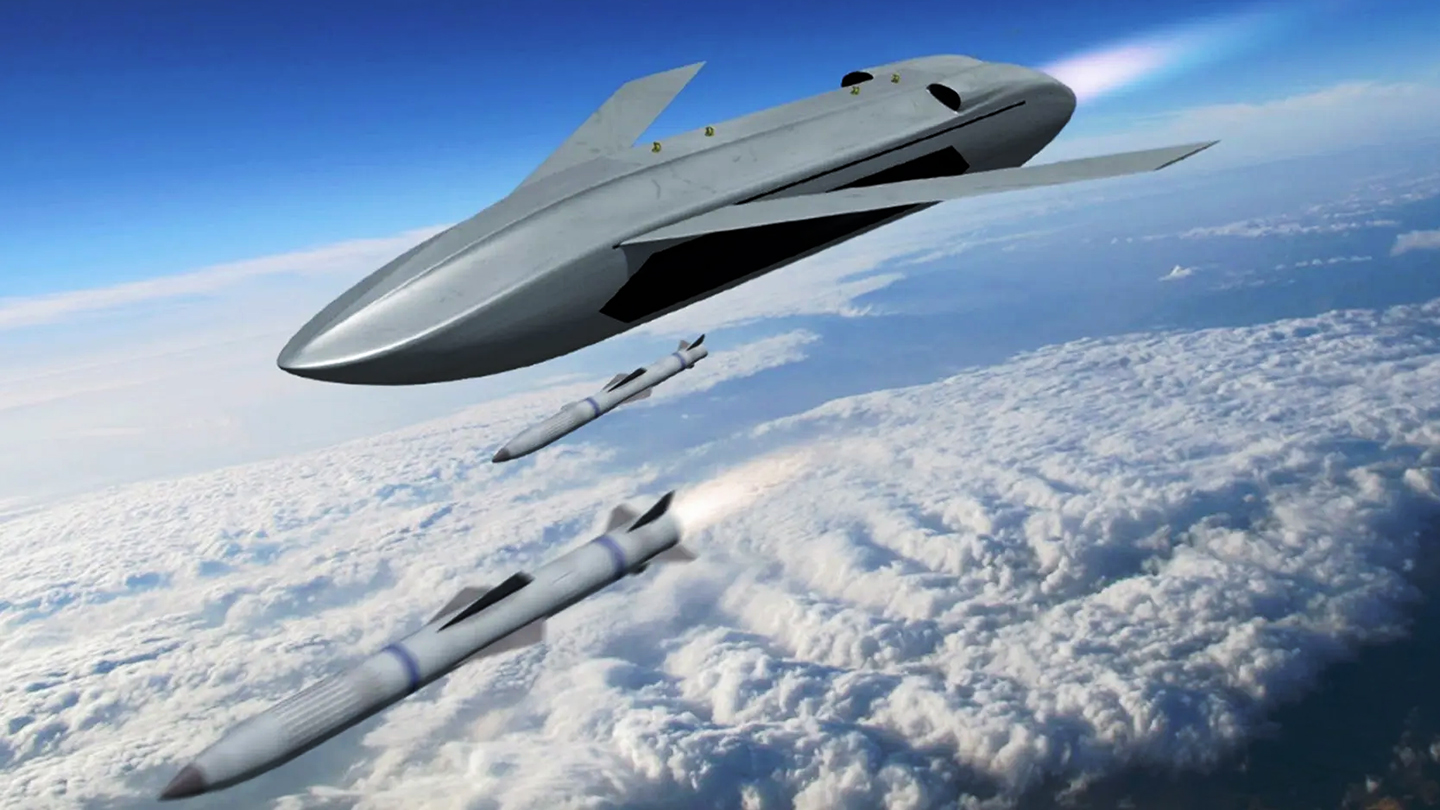The U.S. Air Force is looking for a new air-to-air missile that will be relatively cheap, high speed, and small enough to arm its new Collaborative Combat Aircraft (CCA) drones. The development comes as the U.S. military in general assesses its future requirements for air-to-air missiles, including a focus on smaller weapons for internal carriage, although this appears to be the first effort to include a specific requirement to arm CCAs.
A request for information (RFI) published on May 2nd by the Armament Directorate at Eglin Air Force Base, Florida, provides details of what the Air Force is interested in. Specifically, the RFI is exploring industry potential for delivering a Low-Cost High-Speed Air-to-Air Missile, in two different sizes. One of these will have a form factor similar to the in-service AIM-120 AMRAAM “to provide a low-cost solution with maximum range.” This will be expected to arm the F-16 and F-15E and reflects the U.S. military’s wider ambition to field longer-range AAMs, especially in view of the threat posed by China in this regard.

More interesting, perhaps, is the second missile outlined in the RFI, which is also a low-cost weapon, but “at half the size of an AMRAAM, to double aircraft loadout while maximizing range in the design.” The reference to increased loadout speaks to another current concern, namely the ‘magazine depth’ of fighters, i.e., the relatively small number of AAMs they can carry, which may well fall short of requirements in a conflict with a more capable adversary.
At the same time, the smaller missile would be suitable to arm CCAs, although the RFI notes that other launch platforms would also be considered, including the LongShot drone, which is being developed specifically as an air-launchable uncrewed aircraft capable of firing AAMs. Ground launch of these missiles is also being considered.
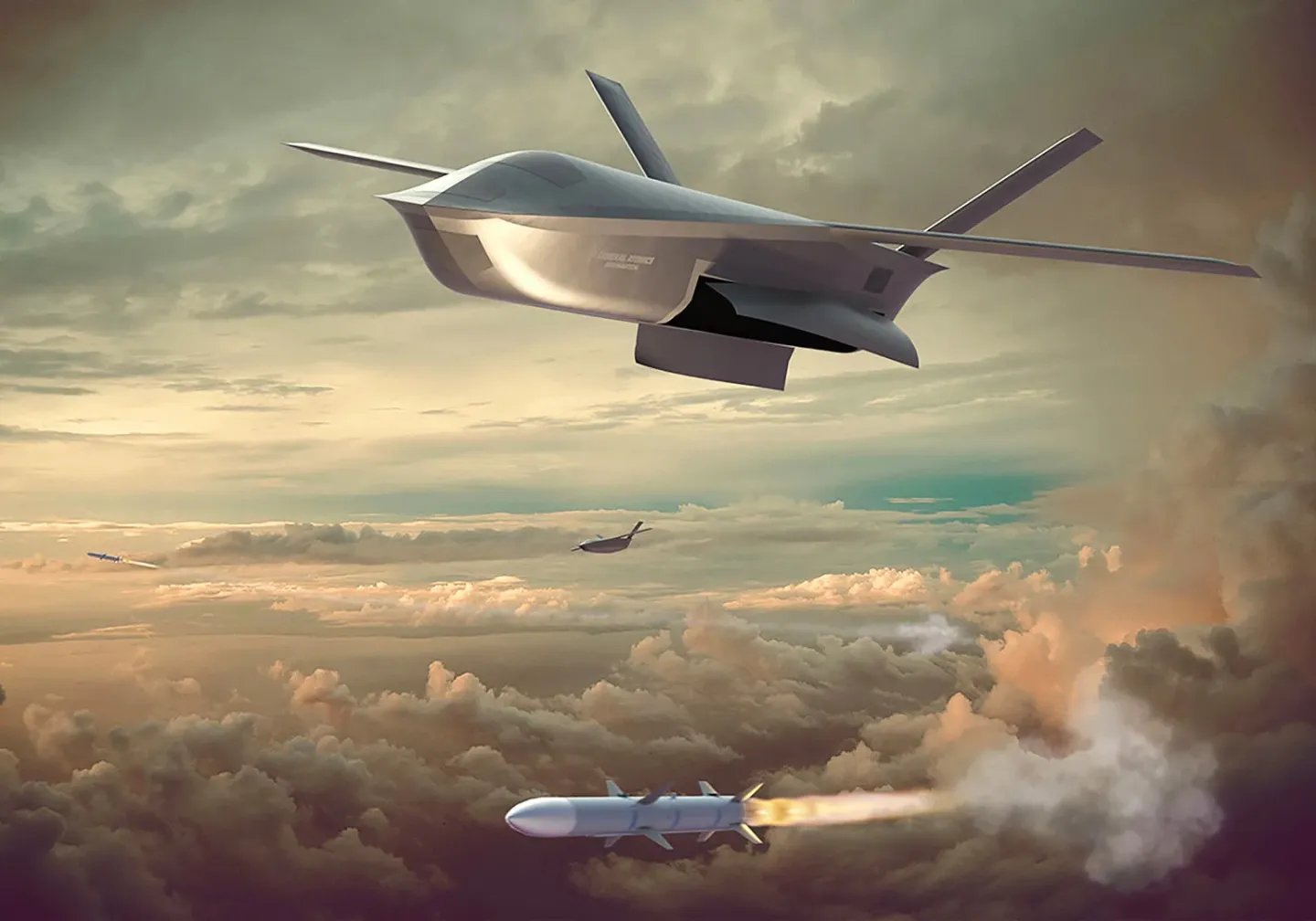
In terms of targets, the RFI defines these primarily as fourth-generation aircraft “with moderate maneuvers,” as well as large aircraft such as airborne early warning and control platforms, bombers, and tankers. This indicates that the missiles the Air Force is seeking will prioritize range (as well as low cost) rather than the highest level of agility.
The RFI specifies a production capacity of 1,000 all-up rounds (AURs), no later than 24 months from contractor award. An AUR refers to a missile delivered in completely assembled form, except perhaps for some rapidly attached components such as wings and fins. The target cost for an AUR is no more than $250,000. This contrasts with a little over $1 million for a single AIM-120D AMRAAM, or around $450,000 for a short-range AIM-9X Sidewinder.
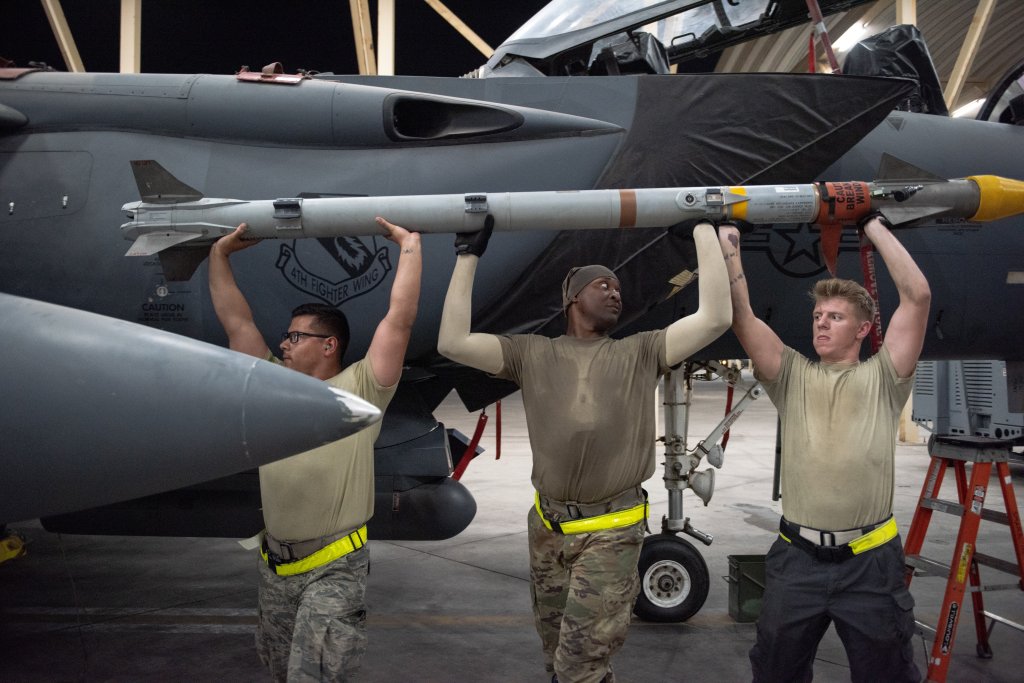
Should a design be chosen and make its way to the manufacturing phase, the U.S. government proposes a schedule that would include two six-month design cycles, followed by a 12-month follow-on for production.
The RFI also states that the proposed missile designs should include open system architecture, mature hardware where possible, including their seeker technology, with the possibility of a datalink to communicate with the launch aircraft, “if needed.” For an extended-range missile, a two-way datalink would seem like a prerequisite, allowing the weapon to receive mid-course targeting updates or be redirected altogether.

The Air Force also desires the “maximize reuse of existing components,” where possible.
In some respects, the least surprising aspect of the RFI is the Air Force’s requirement for a long-range AAM, although the parameters of this are not explicitly set out.
For the latest AIM-120D-3 variant of the AMRAAM, the range is classified, but believed to be around 100 miles, depending on the launch envelope and other factors.
Already, the Air Force and Navy are jointly developing the AIM-260, a new AAM that is intended to offer much greater range than the current AMRAAM, as well as other new and improved capabilities. Critically, the AIM-260 will result in a missile with similar dimensions to the AIM-120. In the meantime, perhaps as a gap-filler pending the arrival of the AIM-260, there are signs that a new AIM-120E variant of AMRAAM may now be in development, again with extended range.
The Navy also chose another route to fielding a very long-range AAM, with the recent introduction, at least on a limited level, of an air-launched version of the Standard Missile-6 (SM-6) under the AIM-174B designation. The range of this missile is classified but should be far in excess of that of the AIM-120D, probably in the hundreds of miles, as discussed in the video below.

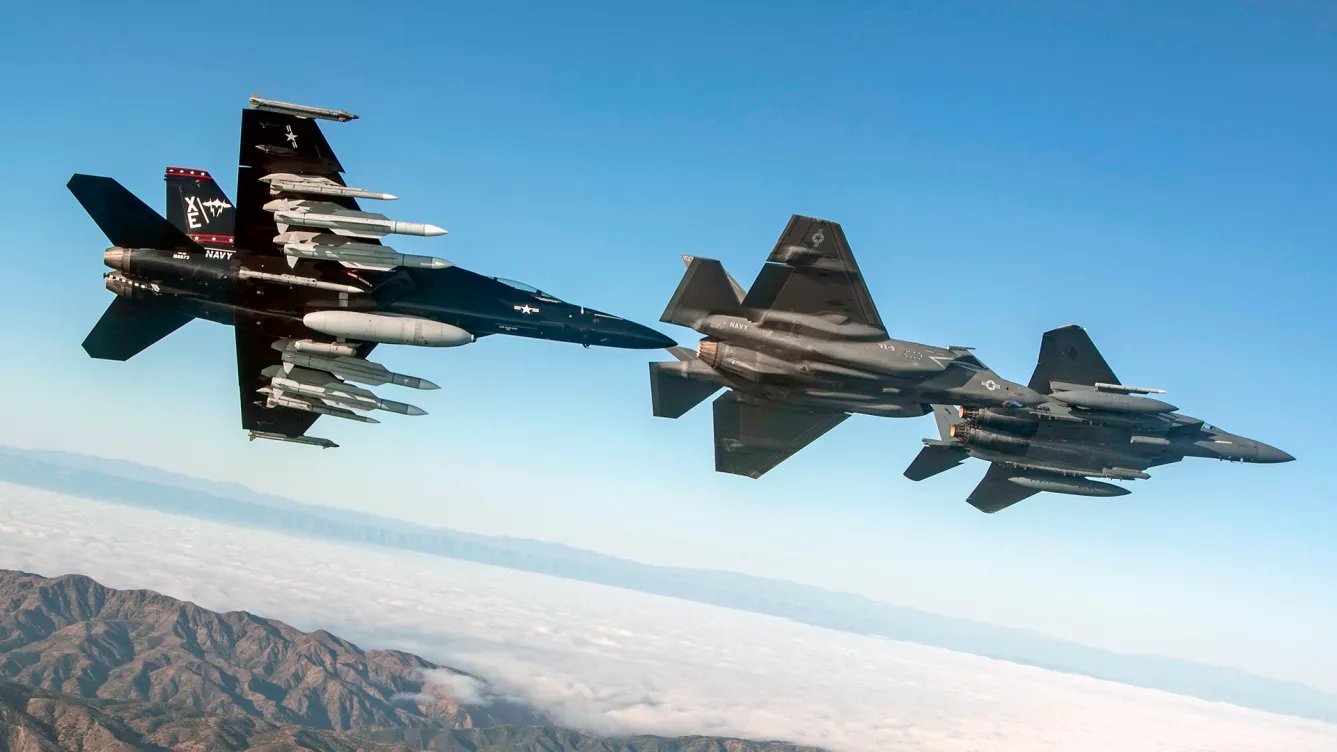
Meanwhile, there are concerns now that adversary anti-air missiles with ranges of up to 1,000 miles could be part of the threat ecosystem facing U.S. forces by 2050.
One way of bringing down the size of an AAM would be to use a hit-to-kill concept, removing the warhead to maximize the propellant in an otherwise small package.
The RFI’s call for a low-cost AAM is also in keeping with current concerns around missile availability and the ability to rapidly spin up production, affordably, especially to meet the demands of a future conflict fought against China in the Pacific.
So far, the Air Force has focused much of its attention on low-cost air vehicles that could evolve into relatively cheap cruise missiles, including plans to scale up production of selected designs, with the help of the Pentagon’s Replicator initiative. Overall, the U.S. military is seeing growing demand for less-expensive standoff munitions, and it makes sense that this would also be a key factor for future AAMs. The growing problem of missile cost per engagement is something highlighted by recent drone and cruise missile intercepts in and around the Red Sea. For these kinds of targets, a highly agile, high-end AAM is not required.
As to the required form factor, at least for the smaller missile design, this is, in many ways, the most interesting part of the requirement.
As previously mentioned, concerns around magazine depth on Air Force combat aircraft have been around for a while, although recent experience in Middle East combat operations has provided more impetus for developments in this direction. The crew of at least one Air Force F-15E was forced to switch to guns after running out of missiles while responding to Iran’s missile and drone barrage in April 2024, but was unsuccessful in bringing anything down.
The F-35 stealth fighter has frequently been at the forefront of discussions about magazine depth, due to its being limited to carrying four AMRAAMs internally. As air combat has evolved, this is increasingly seen as insufficient, leading to the development of the Sidekick weapons bay adapter for the F-35A and C variants, which will increase the number of AMRAAMs the jets can carry internally to six.
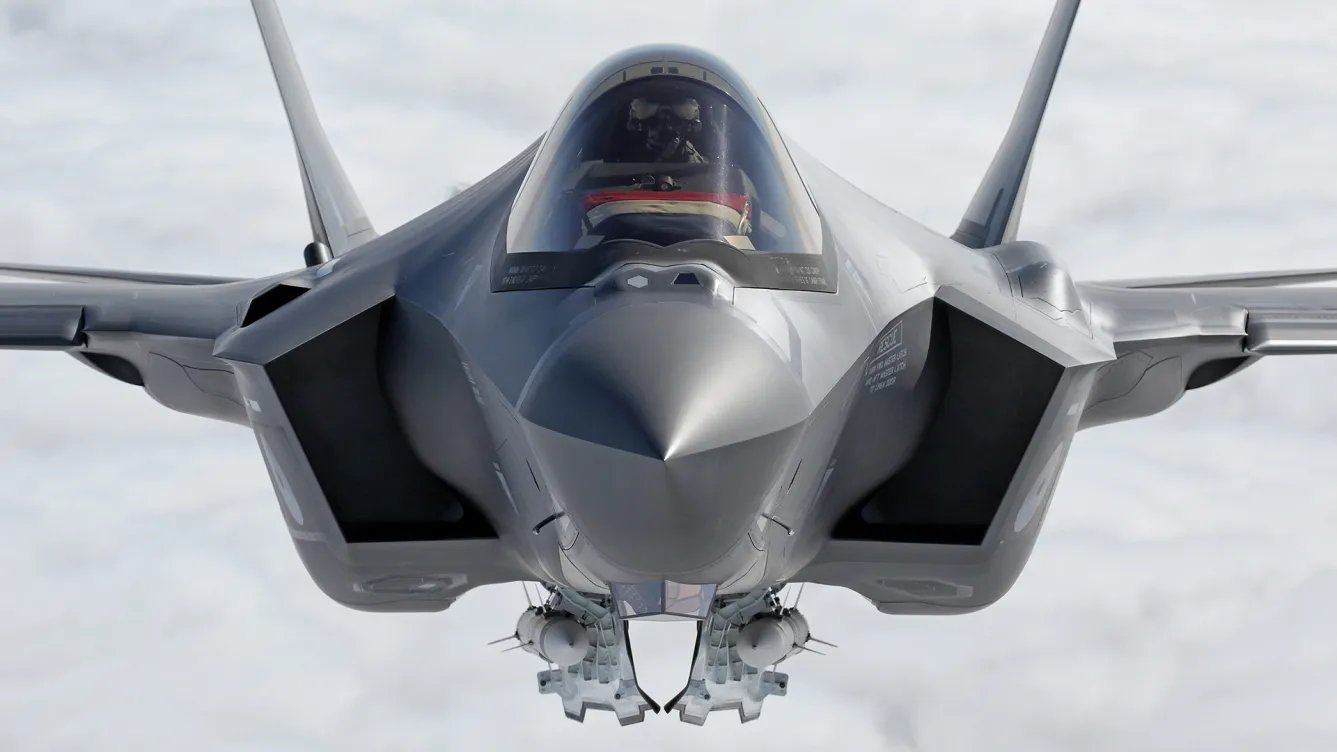
However, neither the F-35 nor the F-22 is mentioned in the RFI, with the only fighters specified for carriage of the new missiles being the F-16 and the F-15E. However, bearing in mind that even the larger of the two missiles will be the same size as the AMRAAM, it would seem likely that the weapons would have the potential, at least, to be carried internally in stealth fighters, too.
For stealth jets, their ability to get far closer to targeted threat aircraft and survive, combined with greater magazine depth, would be attractive, even if it means sacrificing missile range. Also not mentioned in the RFI is the F-15EX, but with its prodigious load-carrying capacity, the option of carrying twice the AAMs at half the cost would likely be very tempting indeed.
Indeed, Air Force interest in smaller-sized AAMs goes back a while.
Back in 2019, Raytheon unveiled a new medium-range missile design, the Peregrine, that is roughly half the size of its AMRAAM. The Peregrine is said to have equivalent and in some cases superior performance to the older missile. Just as importantly, the new weapon offered the potential to effectively double the number of missiles that fighter jets such as the F-35 or F-22 could carry internally.
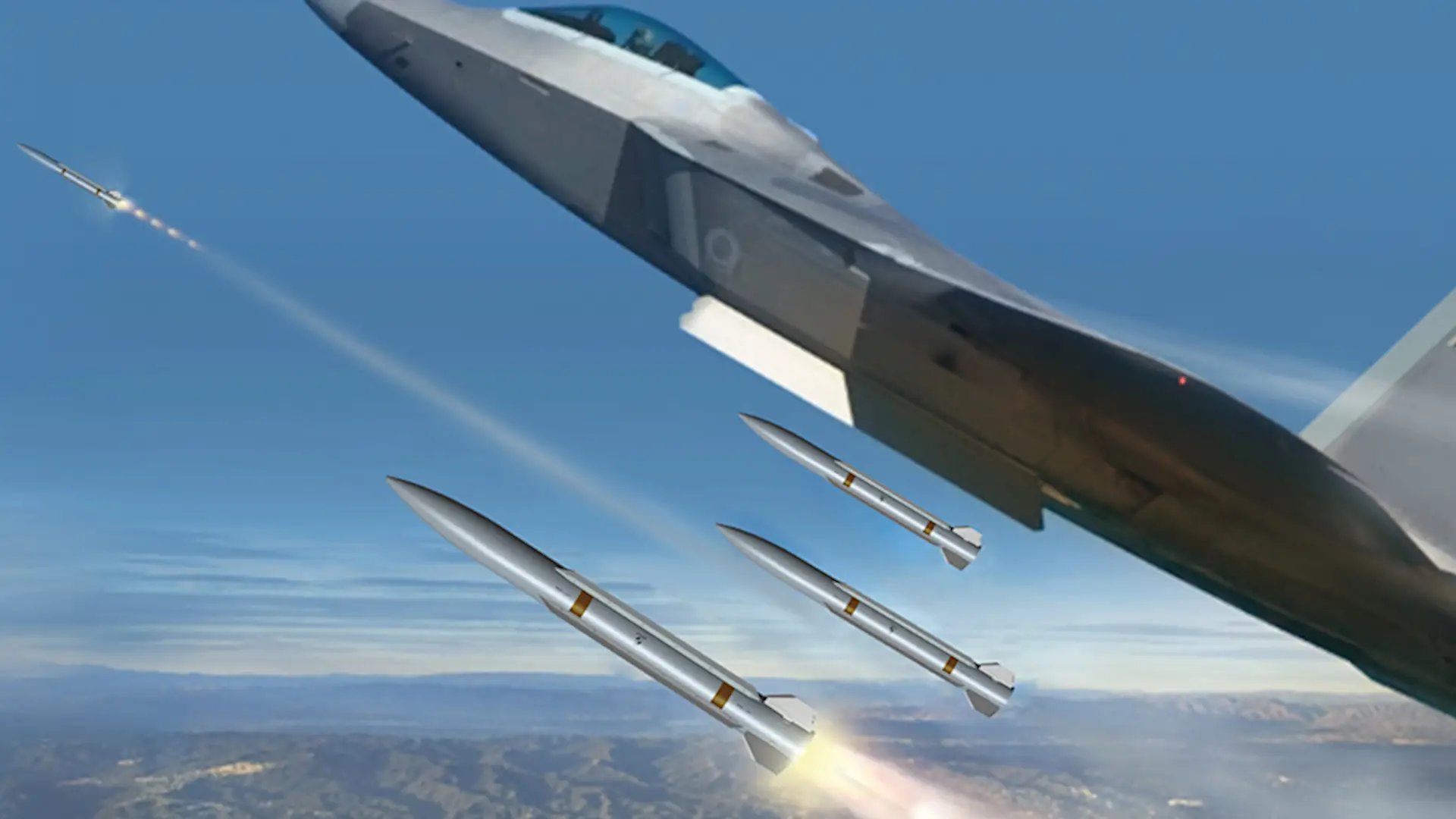
Even before that, Lockheed Martin touted a very similar miniaturized beyond-visual-range AAM called Cuda in the early 2010s, though it had largely disappeared from the company’s marketing by the end of that decade.

More recently, in 2022, the Air Force revealed that it was planning to test-fire a Modular Advanced Missile from a fighter. Before that, it was confirmed that Boeing had received a contract for work related to the development of both compact and very long-range air-to-air missile designs derived from the same modular missile concept, which TWZ was first to report on.

Since these developments, there has been a flurry of work on ‘loyal wingman’ drones, including the Air Force’s current CCA program, at least some of which are based around drones that can carry AAMs, as well as other munitions and stores. In an air-to-air context, the CCAs will work closely with crewed aircraft, significantly extending their reach while enhancing lethality and survivability.
As it stands, the primary mission of the first increment of CCAs will be acting as flying ‘missile trucks’ supporting crewed combat jets, a fact reflected by the FQ (Fighter Drone) designations, for the General Atomics YFQ-42A and the Anduril YFQ-44A.

Interestingly, however, the Air Force in 2023 said that it was looking to accelerate the production of the future AIM-260, in part to help ensure there will be enough of these missiles to arm its coming fleets of CCAs.
It’s not clear whether that plan has now changed or if priorities have shifted. Perhaps, the AIM-260 will be earmarked for the F-35 and F-22 that are expected to be among the first to be armed with this missile, which might require an additional weapon for CCAs and other platforms.
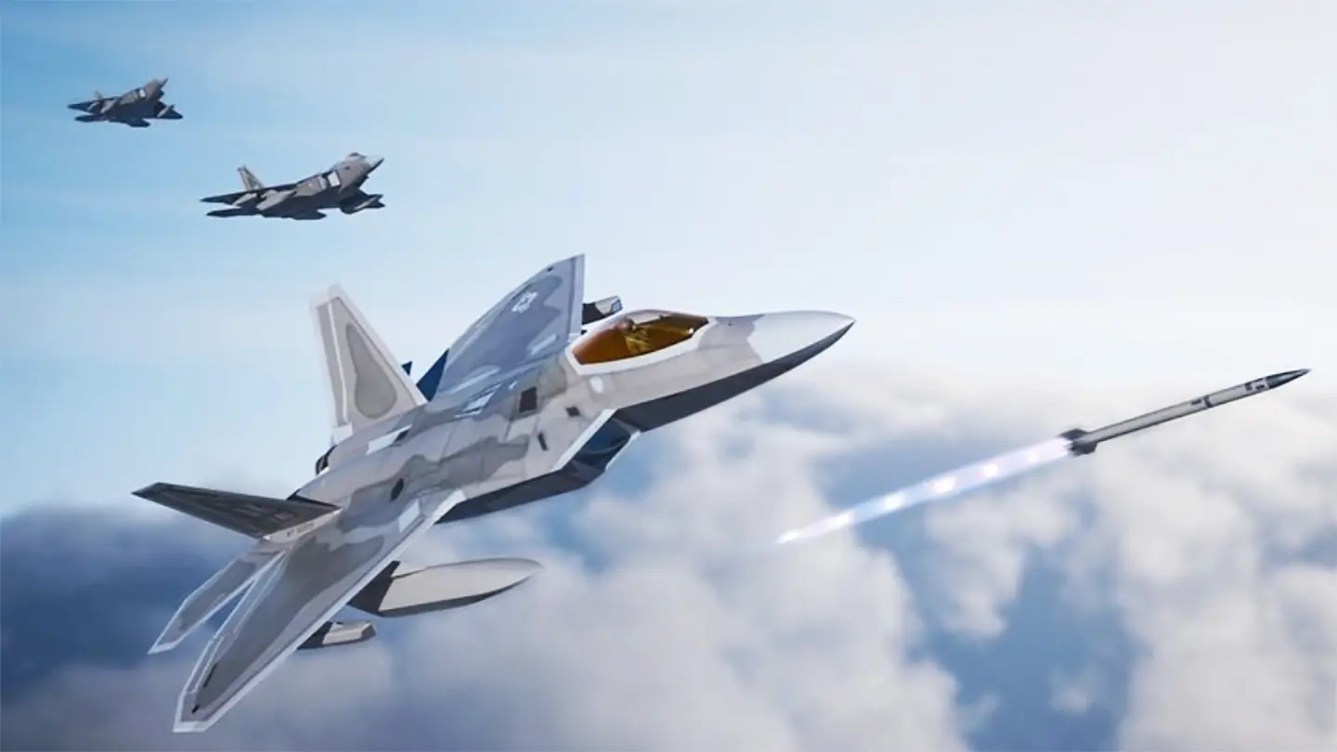
It could also be that the price point is especially critical here.
The Air Force expects to buy between 100 and 150 Increment 1 CCAs, but has said in the past that it could ultimately acquire at least a thousand CCA drones across all of the program’s increments. That is before taking into account arming of the Longshot drone, which is being developed specifically as an air-to-air ‘missile truck.’

Providing all these drones with sufficient air-to-air armament is a big ask, even if each might have only a relatively limited weapons-carrying capacity.
While it remains to be seen what the Air Force will learn from this RFI and whether it will lead to any prototypes, let alone production missiles, it does at least underscore the service’s vision for CCAs as weapons platforms to support fighters, including the future F-47, in aerial combat.

At the same time, the RFI’s focus on AAMs with long range, reduced dimensions, and low cost also points very much to the service’s vision of future weapons in this class.
Contact the author: thomas@thewarzone.com
